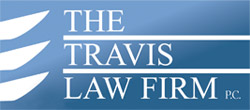Do you know that driving slower saves lives? While most people know that exceeding the speed limit increases their chance of being involved in a motor vehicle accident, they refuse to slow down. Whether it is because they are in a hurry to get to work or make a dinner reservation, drivers often exceed the speed limit. In fact, speeding has become so common that many drivers do not believe they will be stopped for speeding if they are only going a “little” over the speed limit.
Unfortunately, speeding is dangerous. Whether you are exceeding the posted speed limit or driving too fast for weather or road conditions, speeding results in thousands of injuries and deaths each year on Pennsylvania roads.
How Dangerous Is Speeding?
Speeding was a factor in 28 percent of traffic fatalities in 2014 according to the National Highway Traffic Safety Administration (NHTSA). Almost 9,300 people lost their lives in speeding-related accidents that year. Pennsylvania ranked third highest in 2014 for speed-related fatalities. Over 500 people died in 2014 in speed-related traffic accidents in our state. This figure accounted for 43 percent of the traffic deaths that year. Only New Hampshire and the District of Columbia had higher percentages for speed-related traffic deaths in the United States.
Other key statistics about speed-related accidents from the NHTSA include:
- 36 percent of the male drivers between 15 and 20 years of age who were involved in fatal crashes were speeding at the time of the crash
- 41 percent of speeding drivers in fatal crashes were impaired by alcohol
- 33 percent of motorcycle riders in fatal crashes were speeding at the time of the collision
- 13 percent of speed-related deaths occurred on interstate highways
Unfortunately, percentages and statistics do not tell us why drivers choose to travel at unsafe speeds.
Why Do We Speed?
The NHTSA looked at motivations for speeding. The NHTSA concluded that the reasons for speeding are complicated and vary by driver. However, a study from 2013 examined behaviors of drivers who speed and concluded there are several reasons for speeding. The research revealed five different types of speeding and four different types of speeding drivers.
Types of speeding according to the report:
- Speed zone transitions (speeding when the speed limit changed)
- Incidental speeding, the most common type of speeding, involving short durations of speeding
- Casual speeding that involved speeds high enough that drivers were likely to be aware that they were speeding
- Cruising speeding that is characterized by long durations of speeding
- Aggressive speeding involves a high rate of speed for a moderate duration
The four types of speeders were:
- Deliberate speeders that included drivers who tended to engage in more aggressive and deliberate types of speeding
- Typical speeders who comprised the largest number of drivers and incidents of casual speeding
- Situational speeders who engaged in minimal amounts of aggressive or cruising speeding but many more transitional speeding incidents
- Unintentional speeders who mostly engaged in incidental speeding and some casual speeding but almost none of the other types of speeding
Regardless of why a person exceeds a safe speed, the fact remains the same, speeding contributes to traffic accidents.
Are You the Victim of a Speeding Accident?
If a speeding driver caused you to be injured, you may have the right to recover compensation for your injuries from that driver. Our Erie car accident attorney can sort out the facts to determine who was at fault and who is responsible for your injuries, losses, and damages.
Contact The Travis Law Firm by telephone at (800) 401-2066 to schedule a free consultation with one of our Erie car accident attorneys. It is important that you act quickly to protect your legal right to recover compensation rom the other driver.
